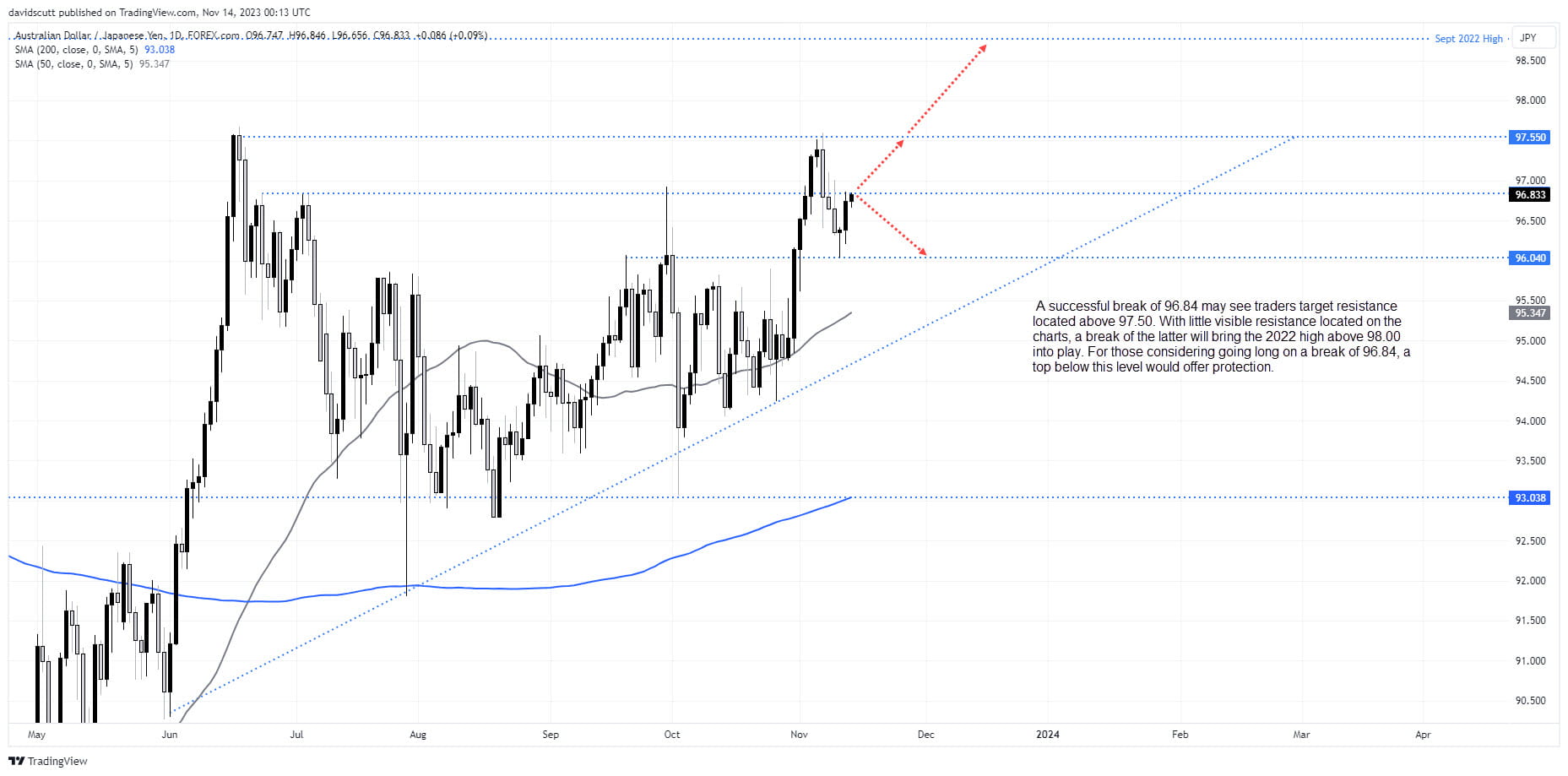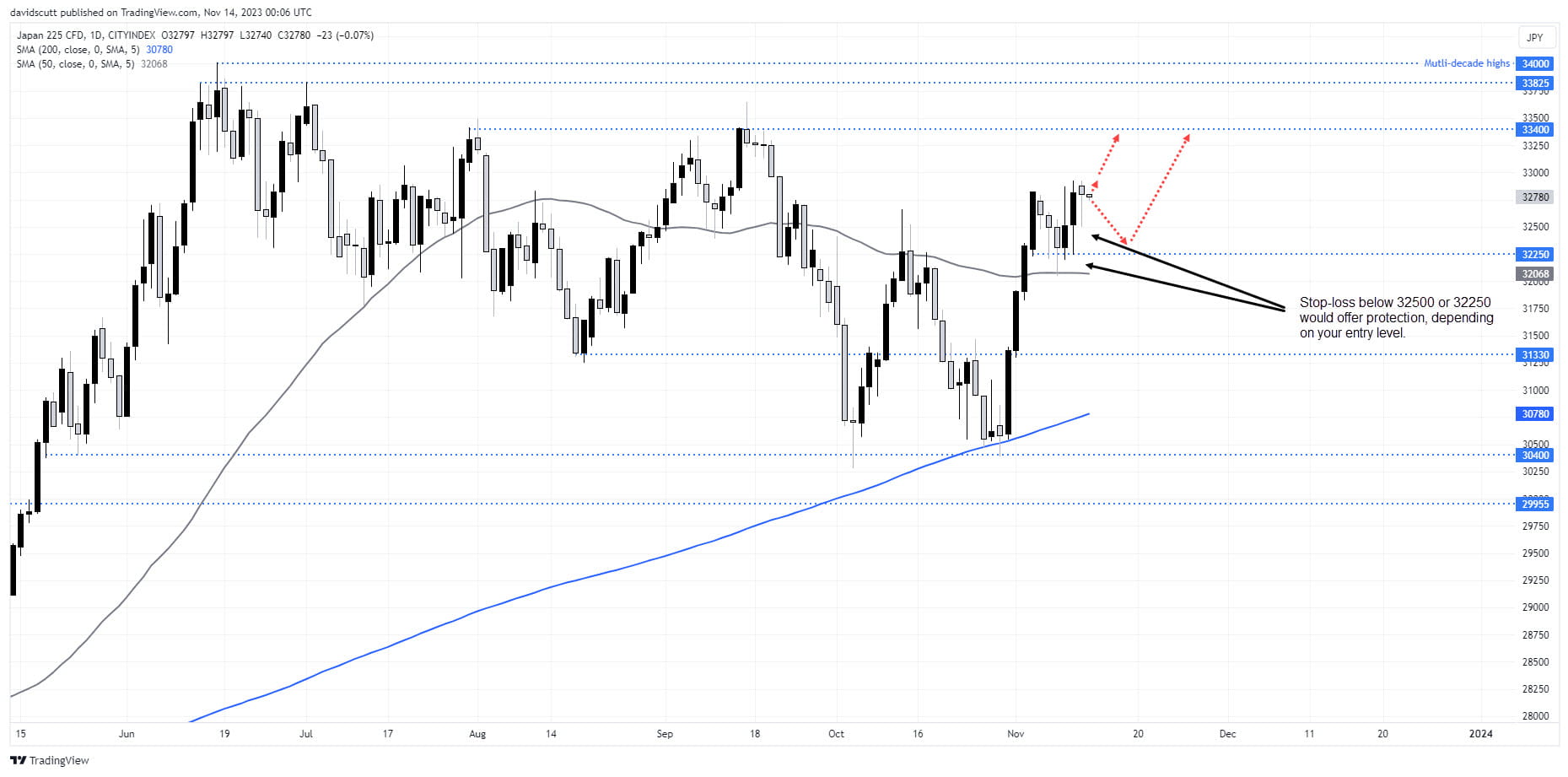
- The BOJ continues to run ultra-easy monetary policy settings, continuing to diverge with central banks such as the RBA
- Widening interest rate differentials are acting to weaken the JPY against other FX pairs
- A weaker yen is a positive for Japanese exporter earnings
BOJ continues to influence JPY, Nikkei outlook
Whether it’s any major FX pair against the yen or the Nikkei 225, the last of least resistance right now seems to be higher. With the Bank of Japan (BOJ) maintaining a dovish stance while lead indicators on inflation are already rolling over, it reinforces the view that Japan’s monetary policy divergence with the rest of the developed world is unlikely to change anytime soon, keeping the yen pressured against major FX pairs. And given the importance of the yen in helping to boost earnings from Japan’s big exporters, its weakness is acting as a powerful tailwind for the Nikkei 225.
While these factors are likely to diminish over the longer-term as past monetary policy tightening leads to slower global growth and convergence between central bank policy, that doesn’t mean FX pairs such as AUD/JPY and the Nikkei can’t continue to grind higher over the short-term.
AUD weak relative to commodity prices, rate differentials
AUD/JPY is interesting as the Reserve Bank of Australia (RBA) is one of last remaining central banks signalling a willingness to continue hiking interest rates. Data out this week is likely to keep that option live with wage growth in the September quarter expected to increase at the fastest pace since records began in 1997. With unemployment near multi-generational lows and lead labour market indicators only softening slowly, it’s too early for the RBA to call time on hikes given underlying inflationary pressures, especially for services, remain uncomfortably elevated.
As a proxy for China, AUD appears undervalued relative to commodity prices and rate differentials, suggesting not only that a lot of bad news is discounted but that it could enjoy substantial upside should sentiment towards the world’s second-largest economy improve. The risks for downside relative to upside at these levels appear to be skewed very much in favour of the latter.
Weighing up the BOJ USD/JPY intervention threat
On the JPY side of the equation, most focus is on whether the BOJ will intervene to support the currency should the government request it. While interest rate differentials between Japan and other advanced economies have narrowed a little in recent weeks, they remain extremely elevated relative to historic norms, making it difficult to justify intervening based on fundamental grounds. Unless the yen truly disconnects with rate differentials, verbal intervention appears the most likely outcome for now.
AUD/JPY grinding higher
AUD/JPY continues to grind higher on the charts, setting higher lows since the middle of the year. It’s finding buyers just above 96.00, bouncing nicely earlier this week off former resistance. That’s left it testing at 96.84, a level it has struggled to overcome dating back to early June. Should the pattern of higher lows continue, a topside break will likely see a retest of resistance above 97.55. With little visible support located above, a break of 97.55 will have traders eyeing off the 2022 highs.

Nikkei consolidates following powerful rebound
With the yen resuming its weakening trend, the Nikkei 225 has enjoyed a powerful rebound over the past fortnight, lifting from 30400 to within touching distance of 33000, breaking resistance at 31330 along the way. With four unsuccessful attempts to break support at 32250, there’s clearly plenty of demand around even after the latest rally. As such, it’s not surprising to see the hammer candle produced on Monday. A break of 33000 may lead to test if resistance at 33400, although it would be preferable to see a pullback towards 32250 to improve the risk-reward of the trade.

-- Written by David Scutt
Follow David on Twitter @scutty
How to trade with City Index
You can trade with City Index by following these four easy steps:
-
Open an account, or log in if you’re already a customer
• Open an account in the UK
• Open an account in Australia
• Open an account in Singapore
- Search for the market you want to trade in our award-winning platform
- Choose your position and size, and your stop and limit levels
- Place the trade











